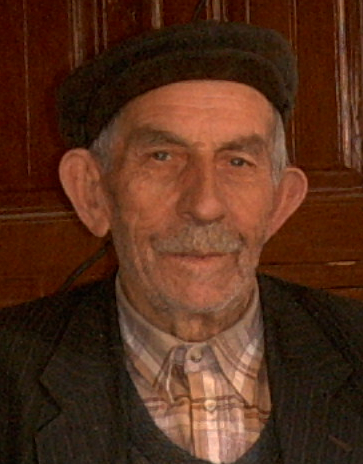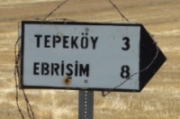History
History 1
There are no written sources about the history of Tepeköy. For this reason, one must rely on oral traditions.

Therefore, I asked one of the oldest people in the village, Osman Tekin, who was born in the year 338 according to the old calendar. However, even he is too young to provide precise details about the early history of the village. He also bases his knowledge on oral traditions. Osman Tekin, the village’s mayor from 1955 to 1962, estimates the number of residents in 2001 to be around 400 to 450, with approximately 70 families. At its peak, around 1955, Tepeköy was home to 220 families, equating to a population of about 2,000 people.
According to Osman Tekin, the village was founded around the year “290” because the oldest grave in the Tepeköy cemetery dates back to that year. Initially, the area of Tepeköy was believed to be part of Erbisim, a neighboring village. The generation around Dede Tekin (born “332”) is said to have begun building houses in what is now Tepeköy. Gradually, more people moved to the area, including some from Yesili, another neighboring village.
Eventually, the growing village was purchased from Erbisim and established as an independent settlement.
The name is composed of the words “Tepe” (meaning hill) and “köy” (meaning village). Therefore, the village’s name could be translated as “Hill Village.”
Osman Tekin recalls that in 1939, when he was about 16 years old, an earthquake shook the village and caused minor damage. He still remembers how the “trees were shaken back and forth.” However, at the time, he did not realize that it was an earthquake. The villagers believed that “there were oxen below,” which “shook everything with their horns.”
For a long time, Tepeköy enjoyed a prosperity that neighboring villages could not match. A school, a police station, a café, and similar buildings were constructed, representing a very high standard.
The old mosque is said to have been built during the time of Mulla Mustafa, but it was eventually replaced in 1997 by the new Nihat Tekin Mosque.
The reasons for the migration to the cities since 1990, according to Osman Tekin, are varied. The village simply offers no future for the youth. For example, there was no school for several years.
The fields are often sold in order to use the money to move to the cities. Without fields, a villager cannot sustain themselves. Thus, the younger generation is forced to migrate to the cities.
Deniz-Osman Tekin (2002)
History 2
Our village was established approximately 180 years ago. Our village is a Turkmen village and consists of many tribes. The first families to settle in our village were the Takait (Köksal) and Hıdırlar (Avcı) families.

During the Ottoman Empire, in a place now called Ayıp, which was previously known as Osman Böğrü, there was a commander named Osman Bey who was training soldiers. A man called Takait was one of Osman Bey’s soldiers. During a battle, a sword cut part of Takait’s nose, so he was retired from service. The name Takait comes from the word “tekavüt,” which means retired person.
Because Osman Bey liked Takait, he gave him the land where our village now stands. Later, other tribes migrated and settled in the village. Meşeköy and Erbişim villages are also Turkmen villages, but they were established before ours. Ömerhacılı is also a very old village.
The Kurdish villages were established later by three brothers (Yusuf, Bayram, and Mehmet) who came from the east. The village founded by Yusuf was named Çadırlı Hacı Yusuf Village (Lower Kurd), the one founded by Bayram was named Çadırlı Hacı Bayram Village (Cinderesi), and the village founded by Mehmet was named Çadırlı Kör Mehmet Village (Opposite Kurd). All the families in our village originated from Khorasan in Central Asia, migrating from place to place before finally settling in our village.
Hakan Manav
